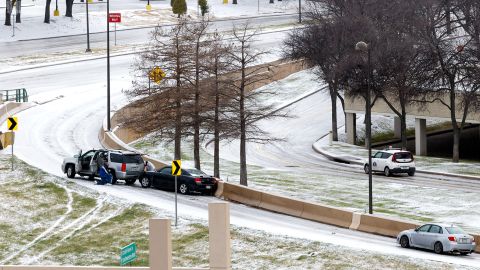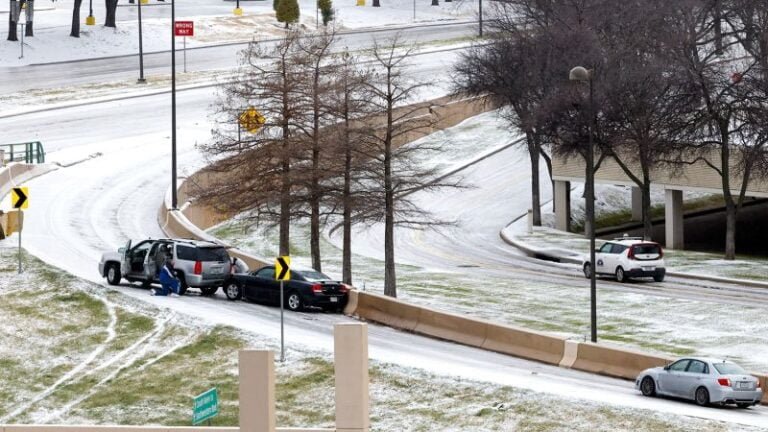CNN
—
The dangerous air will be as cold as 50 degrees UNDER zero will blow in the Northeast while parts of the South struggle to thaw from a deadly ice storm.
The mind-numbing wind chill set to hit New England “could be the coldest it’s felt in decades,” the Weather Prediction Center said.
More than 15 million people are under wind chill warnings or advisories in the Northeast. The alerts go into effect very early Friday morning and last until Saturday afternoon.
“This is an epic, generational blast in the Arctic,” said the National Weather Service in Caribou, Maine. “The air mass that descended on the area Friday into Friday night is the coldest air currently in the Northern Hemisphere.”
Such extreme conditions can cause frostbite in as little as 10 minutes.
Fortunately, the brutal eruption only lasted about 36 hours. Temperatures across much of the Northeast are expected to rise Sunday afternoon.
But further south, cities paralyzed by a deadly ice storm this week will get an edge in the bad weather before it melts this week.
Here’s what to expect in the South and Northeast:

The ice storm linked to at least three deaths in Texas will dump more freezing rain Thursday morning.
Another quarter inch of ice could shine in central and northern Texas, as well as southern Oklahoma and Arkansas.
Adding to the misery: More than 400,000 homes, businesses and other electric customers were without power Thursday morning, according to PowerOutage.us. Most of the outages were in the Austin area.
Another 60,000 customers in Arkansas, 20,000 in Mississippi and 20,000 in Tennessee were also without power in Thursday morning’s brutal cold.
But temperatures will warm above freezing in much of the region by midday Thursday.
More than 15 million people will be under wind chill alerts starting Friday as sub-zero temperatures and fierce winds target the Northeast.
“The wind blowing was something northern and eastern Maine hadn’t seen since similar blasts in 1982 and 1988,” the weather service said.
The alerts cover all of Maine, New Hampshire, Vermont, Massachusetts, Rhode Island and Connecticut. They also include northern New Jersey, northeastern Pennsylvania and most of New York state outside of New York City and Long Island.
Bitter cold is expected to move into the region Friday morning, and the coldest temperatures are expected Friday night and Saturday morning.
Temperatures will drop below zero degrees Fahrenheit in much of New York state and New England. In northern New York and northern New England, temperatures will drop to 15 to 25 degrees below zero.
But the fierce wind will make the air feel colder – with wind chills falling to -35 to -50 degrees in northern New York state and northern New England.
“Avoid any outdoor activity on Friday and Saturday!” the New Hampshire Homeland Security and Emergency Management posted on Facebook. “The cold temperatures paired with the wind chill factor can lead to life-threatening conditions outside.”
New York City can withstand wind chills as low as 10 degrees below zero.
And in Boston, where the air will feel like 27 degrees below zero, the mayor has declared a cold emergency for Friday through Sunday.
“I urge all Boston residents to take care, stay warm and safe, and check on your neighbors during this cold emergency,” said Mayor Michelle Wu.
Activated by Connecticut Gov. Ned Lamont’s extreme cold weather protocol for the state, starting at noon Thursday and lasting through the weekend.
“With the kind of extreme cold weather headed our way, frostbite can develop on exposed skin in less than 30 minutes,” the governor warned.
“Spending long periods of time outdoors in these conditions is not only harmful, it can be fatal.”
Shelters and warming centers are available throughout Connecticut, and transportation can be provided if needed, Lamont said.
Warming centers are also expected to be available in Maine, Rhode Island, Massachusetts and Vermont, officials said.
The pain doesn’t last long, though. High temperatures across the region will rise by 20 to 30 degrees between Saturday and Sunday.
In fact, much of the Northeast — with the exception of northern Maine — was actually above normal Sunday, with high temperatures reaching the 30s and 40s.
